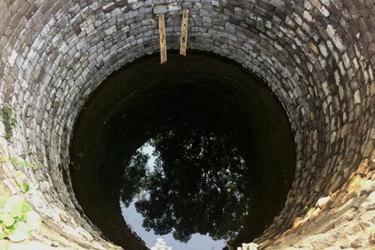Well Water Safety 101: Maintaining Purity In Home Water Supplies
By Ellie Gabel

Private wells can be an excellent source of drinking water, but they require diligent maintenance and monitoring to ensure safety and quality. Maintaining well-water purity also involves understanding contamination risks, leveraging advanced monitoring techniques, and implementing targeted treatments. Explore key practices operators and engineers can employ to protect home water supplies and uphold rigorous safety standards.
Understanding Contamination Sources And Pathways
Contamination risks in private wells stem from various sources, and managing these risks requires a thorough understanding of how contaminants travel through groundwater systems. Unlike municipal water systems governed by the Safe Drinking Water Act (SDWA), private wells lack federal oversight, leaving homeowners responsible for managing potential hazards. This lack of regulation necessitates a proactive approach to detecting and mitigating risks.
Common contaminants include nitrates from agricultural runoff, bacteria such as E. coli from septic systems, and heavy metals like arsenic from industrial activities. Identifying potential contamination pathways is critical.
Pathways can involve fractured aquifers, compromised well casings, or surface infiltration near the wellhead. Understanding these contamination dynamics can help professionals ensure well water remains safe and potable, regardless of external influences.
Well Construction Standards And Maintenance
Maintaining well integrity starts with robust construction practices. Proper siting, casing, grouting, and sealing are essential to prevent surface contamination from infiltrating groundwater supplies. Advanced construction standards — such as using stainless steel casings in areas with known corrosive contaminants or installing annular seals — are critical to enhancing long-term well safety.
Recommendations for operators include:
- Annual visual inspections: Check for any signs of damage, rust, or cracks on the well casing and cap. Even minor breaches can become significant contamination pathways.
- Hydrogeological surveys: For wells in regions with high seismic activity or other geologic instability, periodic surveys should be conducted to assess changes in aquifer conditions that could affect the well.
- Pump and motor inspection: For wells equipped with submersible pumps, pump and motor assembly maintenance should also be routine to avoid mechanical failure, which can introduce contaminants if the equipment is submerged in standing water.
Implementing A Water Quality Monitoring Program
With over 15 million American households depending on private wells, ensuring water quality is a critical task that requires a robust monitoring program. Given the variability in well depth, geologic conditions, and local contamination risks, sampling protocols should be tailored to site-specific conditions. Sampling frequency should consider seasonal variations and potential contamination sources in the vicinity.
Regular testing for coliform bacteria, nitrates, Ph, and turbidity is standard practice. However, advanced testing may also include volatile organic compounds (VOCs), heavy metals, and radionuclides, particularly in regions with industrial activities.
Techniques such as gas chromatography-mass spectrometry for VOC analysis, inductively coupled plasma mass spectrometry for trace metals, and ion chromatography for specific anions are highly recommended. For practitioners, leveraging these methods can provide detailed insights into contaminant profiles and concentrations.
Implementing sensors that provide real-time data on key parameters like pH and dissolved oxygen levels can facilitate rapid detection of potential contamination events. Though more costly, these systems offer enhanced monitoring accuracy and can alert operators to fluctuations indicative of contamination.
Treatment Options For Contaminant Removal
Should contamination be detected, selecting an appropriate treatment method is essential. Treatment technologies should be matched to the specific contaminant profile of the well.
Advanced treatment options include:
- Reverse osmosis (RO): This is effective for removing a wide range of contaminants, including nitrates, arsenic, and VOCs. RO systems are particularly suited for treating groundwater with complex contamination profiles that require high maintenance and energy costs.
- Ion exchange: Ion exchange is suitable for removing heavy metals and hardness ions. This method can be deployed as a point-of-entry treatment for wells with elevated levels of metals, such as lead or cadmium.
- Activated carbon filtration: This is widely used for organic contaminant removal, especially VOCs. Activated carbon is also effective for odor and taste control and is often used as a secondary treatment to complement RO or ion exchange systems.
- UV disinfection: UV disinfection provides an effective method for inactivating pathogens without chemical additives for wells with microbiological contamination. Ensuring proper intensity and residence time is crucial for efficacy.
Addressing Emerging Contaminants
Emerging contaminants such as per- and poly-fluoroalkyl substances, pharmaceuticals, and endocrine-disrupting compounds present new challenges for well water safety. Traditional treatment methods may not effectively remove these contaminants, necessitating advanced technologies like activated carbon adsorption, advanced oxidation processes, or high-pressure membrane filtration.
Understanding these contaminants' geochemical interactions and transport mechanisms within aquifers is critical for predicting their behavior and implementing effective remediation strategies. Research into biological treatment methods such as biofiltration and phytoremediation is ongoing and holds promise for the long-term management of certain emerging contaminants.
Legal And Regulatory Considerations
Although private wells are not regulated under the SDWA, professionals should be aware of state and local regulations that may impose testing and maintenance requirements. Additionally, liability considerations must be considered when contaminants are detected, especially if these affect neighboring properties or public water supplies.
Staying informed about changes in regulatory frameworks — particularly those related to emerging contaminants — is essential. Collaborating with local health departments and environmental agencies can facilitate compliance and ensure homeowners receive accurate guidance on well-water safety.
Proactive Measures For Sustained Well-Water Safety
Maintaining well-water safety requires a proactive approach that combines regular monitoring, advanced treatment technologies, and adherence to best practices in well maintenance. Understanding the complexities of groundwater contamination and remaining vigilant against emerging risks is crucial. Employing advanced monitoring and treatment strategies can help water professionals and property owners ensure the long-term purity of water supplies, safeguarding the health of those who rely on this vital resource.
 Ellie Gabel is a science writer specializing in environmental science and innovative technologies. She can be reached at ellie@revolutionized.com.
Ellie Gabel is a science writer specializing in environmental science and innovative technologies. She can be reached at ellie@revolutionized.com.
